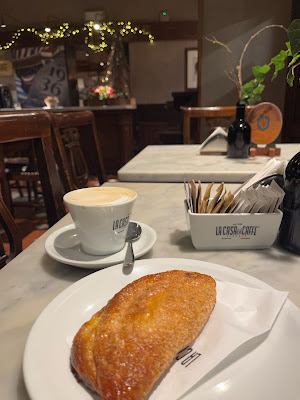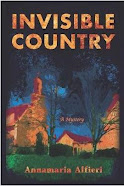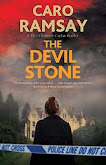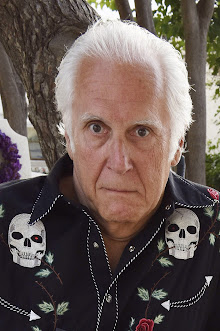End-of-Year Round-Up
Zoë Sharp
So, Christmas Day is here again. Compliments of the season to you all. I hope you are spending the day among friends or family, that you have food, and warmth, and safety.
And I also hope that you have the time and the comfort to read. Because, that being the case, you may just be looking for a Good Book.
To celebrate the season, and the talents of my fellow bloggers at Murder Is Everywhere, I’d like to present you with a little snippet about each, and the recommendation of their latest book to add to your fireside TBR pile.
So, I asked each of the MiE crew for the following:
Their favourite short silly joke
The best/worst/most bizarre gift they’ve ever either given or received
A tradition they either practise with their loved ones, or would like to do
Their one Christmas indulgence
Their latest title
And I hope you enjoy them all.
Short silly joke
Best/worst/most bizarre gift
“Since you do not specify a Christmas give, I will answer with the very best gift I have ever received. It is now nearly 22 years old and still makes me happy. I just LOVE being a little old lady in a hot car!”
A Christmas tradition“For the past several years I have celebrated Christmas in Florence. I love that!”
Your one indulgence
“Panettone.”
INVISIBLE COUNTRY
Paraguay, 1868
A war against Argentina, Brazil, and Uruguay has devastated Paraguay. Ninety percent of the males between the ages of eight and eighty have died. Food is scarce. In the small village of Santa Caterina, Padre Gregorio advises the women of his congregation to abandon the laws of the church and get pregnant by what men are available. As he leaves the pulpit, he discovers the murdered body of Ricardo Yotté, one of the most powerful men in the country, at the bottom of the belfry.
Suspects abound… but to avoid having an innocent person dragged off to torture and death, a band of villagers undertakes to solve the crime. Each carries secrets they seek to protect from the others, while they pursue their quest for the truth.
Short silly joke
From LOVE IN A COLD CLIMATE by Nancy Mitford
(Lady Montdore is talking about her daughter Polly)
"What can be the matter with Polly? So beautiful and no B.A. at all."
'"S.A.," said Lady Patricia faintly, "or B.O."
Best/worst/most bizarre gift
“The best gift ever—from a Christmas three years back and subsequently renewed—was an Audible membership. I still get monthly 'free' (well, free to me thanks to Christmases past and this is a broad hint for Christmases future) and as well as audio books it makes me get out and walk because I only allow myself audiobooks when I'm moving.”
A Christmas tradition
“In Pre-Covid we used to run away to Paris for Christmas because Chinese New Year in Singapore is extended family duty time (I suppose closer to what Christmas is in the West?) and because I love the Christmas street fairs and window displays and getting really cold for a bit by choice and possibly seeing snow. I'd really like to get back to that!”
Your one indulgence
“My indulgence—sorry if it horrifies some—is our delicious durian. The 'Mao San Wang' or Mountain Cat King and Black Gold varieties come into season over the Christmas period. They're expensive--the beluga caviar and Kobe beef of the durian world, only vegan—and my favourite super indulgence of the season!”
THE MUSHROOM TREE MYSTERY
The Allies have defeated Germany in Europe, but Japan refuses to surrender the East.
In Singapore, amid rumours the Japanese occupiers are preparing to wipe out the population of the island rather than surrender, a young aide is found murdered beneath the termite mushroom tree in Hideki Tagawa's garden and his plans for a massive poison gas bomb are missing. To prevent any more destruction it falls to Su Lin to track down the real killer with the help of Hideki Tagawa's old nemesis, the charismatic shinto priest Yoshio Yoshimo.
Short silly joke(s)
“What do you get if you eat Christmas decorations? Tinsillitis!”
“If Santa and Mrs. Claus had a baby, what would he be? A subordinate Claus.”
“Which famous playwright was terrified of Christmas? Noël Coward.”
Best/worst/most bizarre gift
“By far, my best received gift was an Arizona Marriage License because it allowed me to marry the most wonderful person in the world.”
“The worst was just that—two kilos of double smoked reindeer ‘wurst’ done up in tinsel and fancy ribbons that someone thought an elegant gift to give. I think that one also qualifies as my most bizarre.”
A Christmas tradition
“My favorite tradition is spending evenings with my grandchildren (and their parents) taking in the homes in their neighborhoods all wondrously decorated for the eight nights of Hanukah and twelve days of Christmas.”
Your one indulgence
“Too many desserts, too much eggnog, and way more than enough karaoke caroling.”
ONE LAST CHANCE (Poisoned Pen Press/Sourcebooks, 2022)
Chief Inspector Andreas Kaldis’s longtime assistant, Maggie, returns to her ancestral home on Ikaria for her 104-year-old grandmother’s funeral, her grief quickly turns to suspicion. Not only had her yaya been in good health just a week before her death, but there are bruises on her arm that suggest a botched IV insertion that no one can explain. While chatting with the savanotria who prepared Yaya’s body for burial, Maggie learns that several other long-lived Ikariots had recently died under the same questionable circumstances.
Back in Athens, Andreas and his chief detective Yianni pursue a smuggling and protection ring embedded in the Greek DEA, and its possible involvement in the assassination of an undercover cop. As leads in the elder-killings on Ikaria and the DEA corruption case converge, Andreas and his crew realize there are international intrigues at play that might well stretch beyond the reach of the law. While they race to prevent yet another untimely death, Maggie’s faith in humanity, the church, and the very legal system she serves is tested in ways she never could have imagined. Can her boss’s Hail Mary pass at securing justice for the victims hope to hit its mark?
Short silly joke
“A wee piece of string goes into a pub.
“‘Are you that wee piece of string that everybody’s talking about?’ asks the barman.
“‘No, I’m a frayed knot.’”
Best/worst/most bizarre gift
“A vague acquaintance once gave me a lovely framed photograph… Of themself!”
A Christmas tradition
“We eat eggs Florentine. We don’t aim high.”
Your one indulgence
“Bucks Fizz with the eggs Florentine—but not this year as we are driving on the 25th.”
THE DEVIL STONE
In the small Highland village of Cronchie, a wealthy family are found brutally murdered in a satanic ritual and their heirloom, 'the devil stone', is the only thing stolen. The key suspects are known Satanists—case closed? But when the investigating officer disappears after leaving the crime scene, DCI Christine Caplan is pulled in to investigate from Glasgow in a case that could restore her reputation.
Caplan knows she is being punished for a minor misdemeanour when she is seconded to the Highlands, but ever the professional, she's confident she can quickly solve the murders, and return home to her fractious family. But experience soon tells her that this is no open and shut case.
She suspects the murder scene was staged, and with the heir to the family estate missing, there is something more at play than a mythical devil stone. As she closes in on the truth, it is suddenly her life, not her reputation that is danger! Will Caplan's first Highland murder case be her last?
Short silly joke
“What do you call 100 lawyers at the bottom of the sea? A good start.”
Best/worst/most bizarre gift
“Five years ago, the radiologist who read my mammogram results gave me a cancer diagnosis, early enough to treat it aggressively, and fight for a cure. It was both the worst (for obvious reasons) and the best (because we found it early enough that, five years later, I am cancer free and cured) gift I can remember.”
A Christmas tradition
“When I lived in the States, I used to take my son to the mall every year on Christmas Eve to eat soft pretzels, drink hot cocoa, and watch all the freaked-out people trying to finish their Christmas shopping. (I’ve always done my shopping way in advance.) I’m still trying to find the ‘right’ tradition for Christmas Eve in Japan, but I'm having great fun trying out different options!”
Your one indulgence
“Gingerbread Lattes from Starbucks. I’m not usually a sweetened coffee person, but I really, REALLY love the gingerbread latte.”
FIRES OF EDO
Edo, February 1566
When a samurai’s corpse is discovered in the ruins of a burned-out bookshop, master ninja Hiro Hattori and Portuguese Jesuit Father Mateo must determine whether the shopkeeper and his young apprentice are innocent victims or assassins in disguise. The investigation quickly reveals dangerous ties to Hiro’s past, which threaten not only Edo’s fledgling booksellers’ guild, but the very survival of Hiro’s ninja clan.
Short silly joke
Stan Trollip: “If someone doesn’t know something, suggest they ask fruit salts.”
“Fruit salts?”
“Yes, fruit salts. Eno’s.” (I assume Eno’s is worldwide!)
Michael Sears: My favorite is Yogi Berra's response to criticism. It can be used in many situations. "It runs off my back like a duck."
Best/worst/most bizarre gift
ST: “The best gift I remember receiving was a box of magic tricks when I was about 14. My parents wrote to Hamley’s in London, who wrote back with their selection. My parents sent the money—how I don’t know—and there it was under the tree on Christmas Day. I proceeded to bore friends and family with magic shows. To this day I love watching good magicians. I’m such a sucker for being fooled!”
MS: “I once received a plaster copy of a human skull with a scroll of paper rolled up in its eye socket. The gift was from Stan, and if you've read A CARRION DEATH you'll know what it's about. One of my best gifts ever. Touch of the bizarre too...”
A Christmas tradition
ST: “I would very much like to get out of the tradition of giving big presents to adults. We all already have so much STUFF! Instead, my gift to Mette this year is to cook a celebratory dinner once a month for 2023 of a dish that neither of us has ever had before, each from a different country, with appropriate accompaniments.”
MS: “Champagne!”
Your one indulgence
ST: “I have become a fan of risalamande (Danish Almond Rice Pudding). The pudding is a wonderfully creamy almond rice pudding that is served topped with a delicious cherry sauce! There’s a fun Christmas tradition that accompanies this dessert: The cook hides one whole almond in the rice pudding and whoever finds it in their serving wins a present. The catch: Everyone has to keep eating until the almond is found, no matter how full they are! And, of course, if you find it early, you can conceal it in your mouth so everyone has to keep eating.”
MS: “Champagne, vintage wines, more champagne!”
A DEADLY COVENANT
While building a pipeline near the Okavango Delta, a contractor unearths the remains of a long-dead Bushman. Rookie Detective David ‘Kubu’ Bengu of Botswana CID and Scottish pathologist, Ian MacGregor, are sent to investigate, and MacGregor discovers eight more skeletons.
Shortly after the gruesome discoveries, the elder of a nearby village is murdered in his home. The local police are convinced it was a robbery, but Kubu isn’t so sure… and neither is the strange woman who claims that an angry river spirit caused the elder’s death.
As accusations of corruption are levelled and international outrage builds over the massacre of the Bushman families, Kubu and his colleagues uncover a deadly covenant, and begin to fear that their own lives may be in mortal danger…
Short silly joke
“I'm going with one my seven-year-old was excited to tell me when we were at the Mapua Wharf this week (reunited after an unexpected several weeks apart): ‘What happened when the red boat crashed into the blue boat…? They were marooned.’”
Best/worst/most bizarre gift
“Hmm... okay, let's embarrass myself rather than anyone else and dig into the archives. So probably my 'worst' (embarrassing more than awful) Christmas gift-buying experience - gift itself went down very well, but the purchasing was a shambles - was more than 20 years ago when I was at university and working a summer/Christmas job in a department store. The staff there liked to banter and tease each other, and included school mates and adults who'd known me for a few years (it was my weekend job at high school, and I'd come back and work full-time in the university break). I was one of a few guys among a predominantly female staff. I wanted to buy a nice present for my then-girlfriend at law school, and the department store had a big lingerie section. Lots of the male staff and shoppers were embarrassed to even walk into that section. But I'd zeroed in on a nice item I thought would be appreciated. But how to purchase it without letting the entire staff know what I'd got my girlfriend for Christmas and endure weeks of ribbing afterwards? Especially when she came to visit soon. So I waited until an evening when the store was quieter and a newer staff member less likely to sass me was on the register. Great plan eh? Until the new staff member fumbled the transaction and had to call the manager over the intercom to come over and fix it. Directing the entire staff's attention to red-faced me buying lingerie for his girlfriend. And for anyone not there to witness it, they put up jokes about it on the staffroom whiteboard for the next week! Oops.”
A Christmas tradition
“Something that had become an important tradition for me in the past several years—though like a few things, got disrupted by COVID—was volunteering with Crisis at Christmas in London. The first time, in 2015, was somewhat circumstantial. I was unable to go 'home' to New Zealand for the holiday season with my family due to a frustrating, bureaucratic passport snafu, so decided to volunteer with a homeless shelter for Christmas Day. I discovered Crisis at Christmas, which is so much more than meals on Xmas Day.
“They provide accommodation, food, activities, healthcare, clothing, job assistance, and much more for homeless people for several days at a time when some other shelters are closed. It was an eye-opening, humbling experience. I realised that homelessness is much broader than the public perception of people on the street (and how they got there). I ended up volunteering there for several seasons afterwards, delaying my trips home to New Zealand so I could both volunteer in London with my 'Crisis family' (vols and guests) and spend some southern hemisphere summer with friends and family. Due to unexpected circumstances, I can't volunteer this year as I'm on the other side of the world, but I have donated a place for a homeless person at this year's Crisis at Christmas - they are still doing great work even as they've had to massively adjust given the pandemic. If you'd like to help, you can here: https://www.crisis.org.uk/get-involved/donate-to-crisis-at-christmas/”
Your one indulgence
“Given New Zealand Christmases are a summertime thing (very jarring for my northern hemisphere friends—we southerners are quite cognisant of wintry Christmases even if we didn't grow up with them, because of all the imagery and movies etc, but several of my UK/US pals struggle to wrap their head around the idea of a beachy, barbecues, swimming and hot sunshine Xmas), one indulgence I love is a slice of pavlova—an antipodean dessert of soft and crunchy meringue topped with whipped cream and fruit. Perfect end to an Xmas barbecue.”
One of my highlights of 2022 was getting to edit a first-of-its-kind anthology celebrating Australian and New Zealand crime
writing. DARK DEEDS DOWN UNDER showcases some amazing storytellers and is out now, with a second volume coming in the first half of 2023.
A vibrant southern constellation of crime writers.
Dark Deeds Down Under features the very best of modern Australian and New Zealand crime and mystery writing.
Spend time with some of your favourite Aussie and Kiwi cops, sleuths and accidental heroes, and meet some edgy new investigators.
A crew of beloved series characters—Corinna Chapman, Hirsch, Sam Shephard, Rowly Sinclair, Nick Chester, Murray Whelan—will lead you down dark alleys to meet our newer heroes—the Nancys, Penny Yee and Matiu, Alex Clayton, Kate Miles—and the stars of some cracking standalone tales.
Travel the criminal trails of two countries. From the dusty Outback to South Island glaciers, from ocean-carved coastlines and craggy mountains to sultry rainforests or Middle Earth valleys, and via sleepy towns to the seething underbellies of our cosmopolitan cities.
The 19 dark deeds herein are perpetrated by:
Alan Carter - Nikki Crutchley - Aoife Clifford - Garry Disher - Helen Vivienne Fletcher - Lisa Fuller - Sulari Gentill - Kerry Greenwood - Narrelle M. Harris - Katherine Kovacic - Shane Maloney - R.W.R. McDonald - Dinuka McKenzie - Dan Rabarts & Lee Murray - Renee - Stephen Ross - Fiona Sussman - Vanda Symon - David Whish-Wilson
Short silly joke
“What do you call people who use coitus interruptus? Parents.”
Best/worst/most bizarre gift
“A patient of mine, bless her heart, brought me a crocheted cushion as a Christmas gift. Regrettably, it smelled faintly but distinctly of urine.”
Your one indulgence
“Ginger snaps, apple pie.”
LAST SEEN IN LAPAZ
When a whirlwind romance leads to a brutal murder and the disappearance of a young Nigerian woman, PI Emma Djan resorts to dangerous undercover work to track her down in Accra.
Just as things at work are slowing down for PI Emma Djan, an old friend of her boss’s asks for help locating his missing daughter. According to her father, Ngozi had a bright future ahead of her when she became secretive and withdrawn. Suddenly, all she wanted to do was be with her handsome new beau, Femi, instead of attending law school in the fall. So when she disappears from her parents’ house in Nigeria in the middle of a summer night, they immediately suspect Femi was behind it and have reason to believe the pair has fled to Accra.
During Emma’s first week on the case, Femi is found murdered at his opulent residence in Accra. There are no signs of Ngozi at the scene, and fearing the worst, Emma digs further, discovering that Femi was part of a network of sex traffickers across West Africa.
Emma must figure out which of Femi’s many enemies killed him, but more urgently, she must find Ngozi before she, too, is murdered in cold blood.
THE BOMBAY PRINCE
Bombay’s first female lawyer, Perveen Mistry, is compelled to bring justice to the family of a murdered female Parsi student just as Bombay’s streets erupt in riots to protest British colonial rule. Sujata Massey is back with this third installment to the Agatha and Mary Higgins Clark Award-winning series set in 1920s Bombay.
November 1921. Edward VIII, Prince of Wales and future ruler of India, is arriving in Bombay to begin a four-month tour. The Indian subcontinent is chafing under British rule, and Bombay solicitor Perveen Mistry isn’t surprised when local unrest over the royal arrival spirals into riots. But she’s horrified by the death of Freny Cuttingmaster, an eighteen-year-old female Parsi student, who falls from a second-floor gallery just as the prince’s grand procession is passing by her college.
Freny had come for a legal consultation just days before her death, and what she confided makes Perveen suspicious that her death was not an accident. Feeling guilty for failing to have helped Freny in life, Perveen steps forward to assist Freny’s family in the fraught dealings of the coroner’s inquest. When Freny’s death appears suspicious, Perveen knows she can’t rest until she sees justice done. But Bombay is erupting: as armed British secret service march the streets, rioters attack anyone with perceived British connections, and desperate shopkeepers destroy their own wares so they will not be targets of racial violence. Can Perveen help a suffering family when her own is in danger?
Short silly joke
“This is my step-ladder.”
“My real ladder left when I was a kid…”
Best/worst/most bizarre gift
“Definitely, the weirdest gift I ever received was a Talking Children’s Prayer Clock – shouldn’t that have been a Children’s Talking Prayer Clock? – which could recite prayers in both English and Spanish. (I was an adult at the time.) It was sent as a gag by Al Abramson—an American friend with the most British sense of humour I’ve ever encountered. At least, I hope it was a gag…”
A Christmas tradition
“I would love to introduce the Icelandic tradition to my friends and family in the UK—that of Jolabokaflod, or The Christmas Book Flood. In Iceland, books are exchanged as presents on Christmas Eve, to be started on and enjoyed, usually with chocolate in one form or another, to get you into the Christmas spirit. Iceland, I understand, publishes more books per head of population than any other country, and most of them are sold between September and November for the upcoming holiday. What’s not to like?”
Your one indulgence
“Since about October this year, I have been doing my best to lose some weight. So far, so good, and I don’t want to spoil all that hard work over the Christmas period, but I will be allowing myself maybe just a little more chocolate than normal, and the occasional homemade fruit gin.”
THE LAST TIME SHE DIED
She came back on the day of her father’s funeral, ten years after she vanished. But she can’t be who she says she is…
When Blake disappeared as a teenager, on a cold dark night, her father never reported her missing. She is presumed dead.
Now, ten years later, a young woman with white-blonde hair sits comfortably in the family living room and smiles at the shocked faces around her.
“Don’t you recognise me?” she says. “I’m Blake.”
Detective John Byron isn’t sure whether she’s telling the truth. But as he investigates, he soon realises no one is happy to see her.
And the people who should be welcoming her back with open arms know she can’t be Blake. Because they killed her the night she vanished…
Didn’t they?
TRIAL UNDER FIRE: Charlie Fox prequel
The last thing Charlie Fox expected, when she headed out on routine patrol that day, was to end up riding into a firefight, on horseback, with the Spice Girls…
Before she was a bodyguard, she was a soldier.
Charlie Fox is one of the toughest cookies you could ever hope to meet. A word of advice—don’t try to get her to talk about her time in the military. Let’s just say it didn’t end well.
Before her fall from grace, Charlie was considered a rising star. She made it through one of the hardest challenges any soldier would have to face—Selection for Special Forces. The nightmare that came next is a story I’ve explored in scenes and flashbacks throughout the series.
But what happened before that? Back when Charlie was a young soldier in the regular army, on patrol in Afghanistan, being kept away from the front line fighting as stipulated by the regulations concerning female personnel. What did she do back then to prove her worth as a specialised soldier, under life-and-death conditions? How did she earn her chance?
That is a story I’ve never told.
Until now.
This week’s Word of the Week is courtesy of the SucceedWithDyslexia website of 20 Weird and Wonderful Christmas Words: eggnog, a distinctly festive drink made with warmed beer and egg. The 'nog' part of eggnog comes from a seventeenth-century word for a strong beer or ale, once brewed in the East of England, but that 'nog' actually comes from an even older Scots word 'nugg' or 'nugh', a term for beer warmed by putting a red-hot poker into it. And 'nugg' comes from an even older Old Norse word, 'knagg', for a metal peg or spur, kind of like an early poker.
And the Word of the Year is goblin mode, which was chosen as the Oxford English Dictionary’s 2022 Word of the Year. It is defined as ‘a type of behaviour which is unapologetically self-indulgent, lazy, slovenly, or greedy, typically in a way that rejects social norms or expectations.’


































































